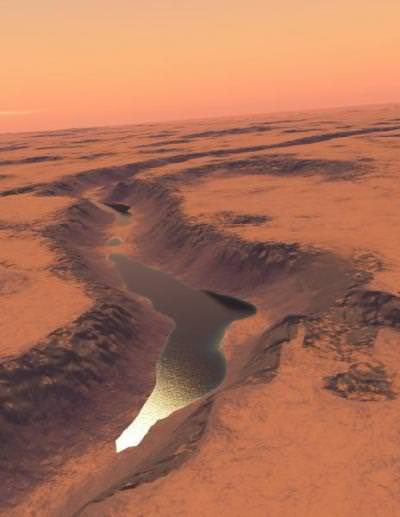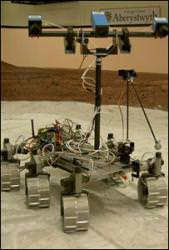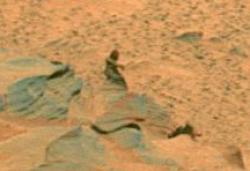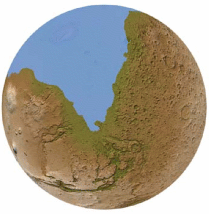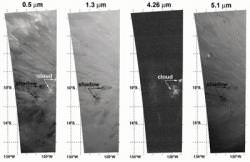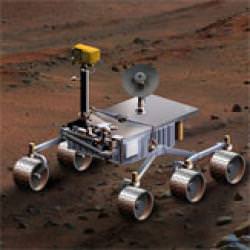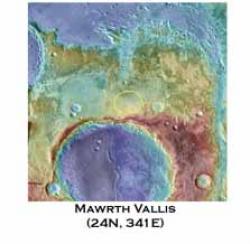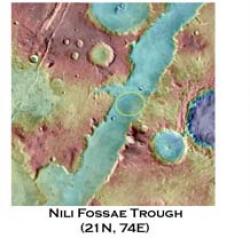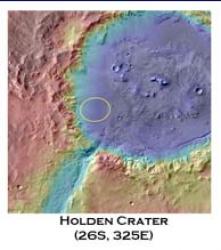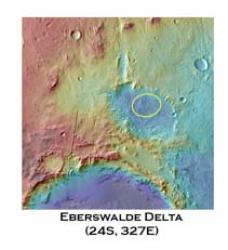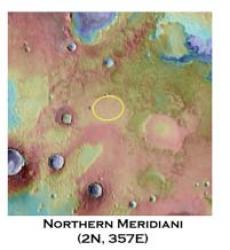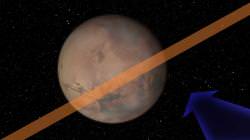[/caption]
If you’re in the market for some remote lakeshore property where you can get away from it all, this might be just what you’re looking for. Located in a secluded, pristine setting, this must-see property might be one of a kind. It’s very remote; – did I mention this lakeshore is on Mars? And, oh — it happens to be a former lakeshore.
While lakeshore property on Mars might sound like the biggest real estate swindle ever, the news of the first definitive lakeshore on Mars is momentous. Using images from the HiRISE Camera on the Mars Reconnaissance Orbiter, a University of Colorado at Boulder research team has discovered indications of a deep, ancient lake, estimated to be more than 3 billion years old.
The lake appears to have covered as much as 80 square miles and was up to 460 meters (1,500 feet) deep — roughly the equivalent of Lake Champlain bordering the United States and Canada, said CU-Boulder Research Associate Gaetano Di Achille, who led the study. The shoreline evidence, found along a broad delta in a region called Shalbatana Vallis, includes a series of alternating ridges and troughs thought to be surviving remnants of beach deposits.
“This is the first unambiguous evidence of shorelines on the surface of Mars,” said Di Achille. “The identification of the shorelines and accompanying geological evidence allows us to calculate the size and volume of the lake, which appears to have formed about 3.4 billion years ago.”
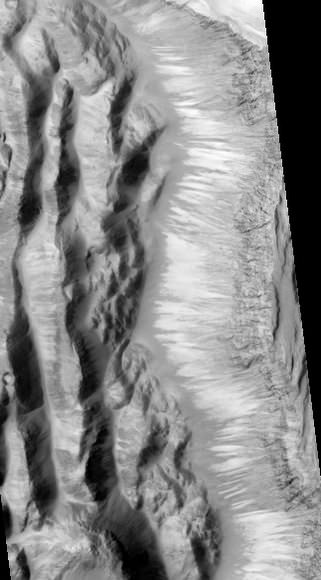
An analysis of the HiRISE images indicate that water carved a 50 km (30 mile) -long canyon that opened up into a valley, depositing sediment that formed a large delta. This delta and others surrounding the basin imply the existence of a large, long-lived lake, said team member Brian Hynek, also from CU-Boulder.
“Finding shorelines is a Holy Grail of sorts to us,” said Hynek.
In addition, the evidence shows the lake existed during a time when Mars is generally believed to have been cold and dry, which is at odds with current theories proposed by many planetary scientists, he said. “Not only does this research prove there was a long-lived lake system on Mars, but we can see that the lake formed after the warm, wet period is thought to have dissipated.”
Planetary scientists think the oldest surfaces on Mars formed during the wet and warm Noachan epoch from about 4.1 billion to 3.7 billion years ago that featured a bombardment of large meteors and extensive flooding. The newly discovered lake is believed to have formed during the Hesperian epoch and postdates the end of the warm and wet period on Mars by 300 million years, according to the study.
The deltas adjacent to the lake are of high interest to planetary scientists because deltas on Earth rapidly bury organic carbon and other biomarkers of life, according to Hynek. Most astrobiologists believe any present indications of life on Mars will be discovered in the form of subterranean microorganisms.
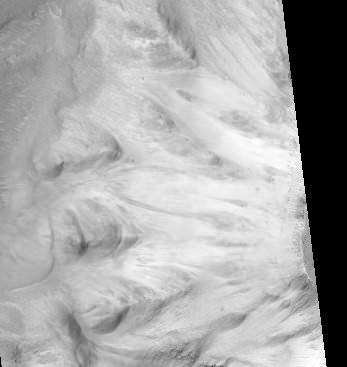
But in the past, lakes on Mars would have provided cozy surface habitats rich in nutrients for such microbes, Hynek said.
The retreat of the lake apparently was rapid enough to prevent the formation of additional, lower shorelines, said Di Achille. The lake probably either evaporated or froze over with the ice slowly turning to water vapor and disappearing during a period of abrupt climate change, according to the study.
Di Achille said the newly discovered pristine lake bed and delta deposits would be would be a prime target for a future landing mission to Mars in search of evidence of past life.
“On Earth, deltas and lakes are excellent collectors and preservers of signs of past life,” said Di Achille. “If life ever arose on Mars, deltas may be the key to unlocking Mars’ biological past.”
The team’s paper has been published online in Geophysical Research Letters, a publication of the American Geophysical Union.

